Fishmonitoring in the river Weser
| A try-out study as a pre-project
for a telemetry survey shall prove wether there can be caught atlantic
salmon which are on their spawning migration river upwards. For this purpose
on the 25th of october 2008 there was a one-day catch test undertaken at the
hydropowerstation at Langwedel/Intschede in the middel Weser.
|
|||
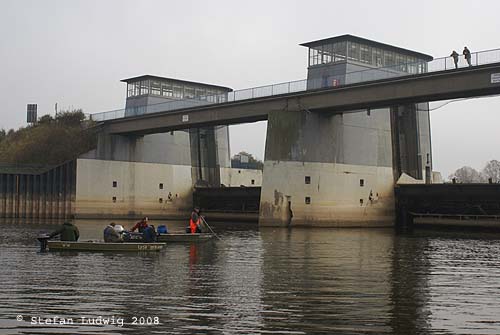 |
Participants:
Furthermore the WSA Verden as well as the LAVES (Department of inland fisheries) were informed about this event. Methods: In a combination of nets and electric fishing was tried to catch migrating salmonids. Within this action there was to be fished against the set out nets with the electrofishing equipement hoping the the fishes are directly caught by electricity or throughout the chase effect with nets. Shortly after doing so the nets were inspected to prevent fishes from too much damage.
|
||
|
At several places there nets set out below the hydropowerstation and than fished by the electrofishing-teams with their boats.
|
On the picture below the third E-team of the AGV Wolfsburg-Vorsfelde (AOLG), that consisted of Dennis Stief, Max Ludwig and Stefan Ludwig.
|
||
|
The team of the Anglervereins Neustadt (Verein Leinelachs) from left to right : Holger Machulla, Ingo Klein and Peter Reddert |
The following net control did not bring the wished results - besides some pikeperches and orfes no fishes could be caught by the method. Surely the the extrodinary clear water of the river Weser was a point that hindered a better catch result. |
||
|
After lunch we tried in three ways to catch migrating salmonids : first by the use of a drift net, second with punctually usage of electrofishing und third in communication with the team by angling rods. |
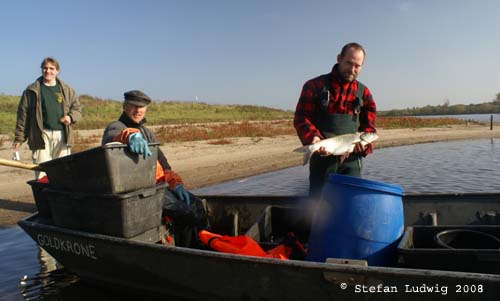 Ingo Brümmer with an asp that was caught by a drift net on the left side of the boat Gernot Quaschny. |
||
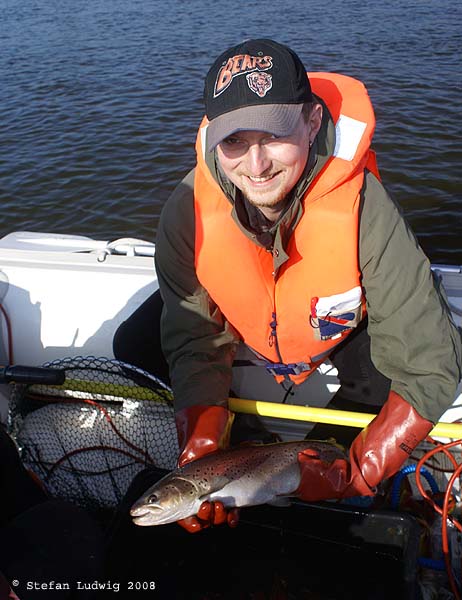 Ingo Klein with a pretty seatrout female. |
This seatrout (left picture) of about 60 cm was caught
with electrofishing equipment. It had a cut-injury at its tailsegment and
was set out in the upstream water of the hydropowerstation. |
||
|
This nice salmon milter of 84 cm was caught by Volker Luedke with an angling rod an is held by Stefan Ludwig who planned this project. |
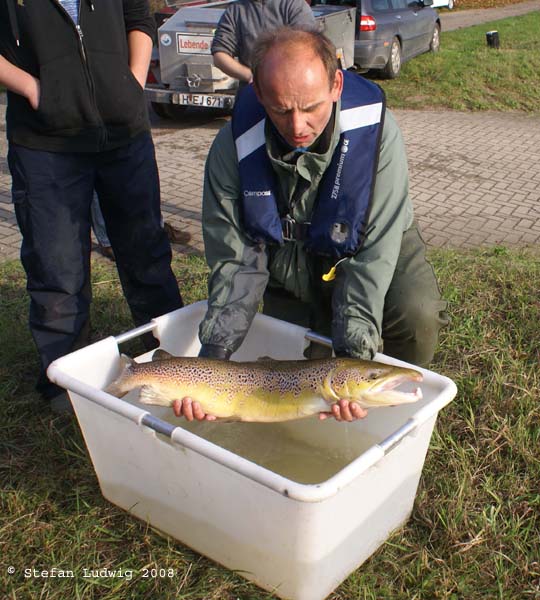 |
||
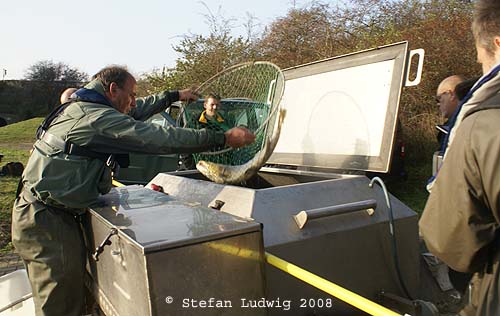 |
...and Detlef Kahnert of the Leinelachs e.V. brought the fish for genetic analysis and stirping to the north-german Salmon-center in Gronau/Leine. |
||
|
Following allternatives are now proofed for a further catch attempt:
|
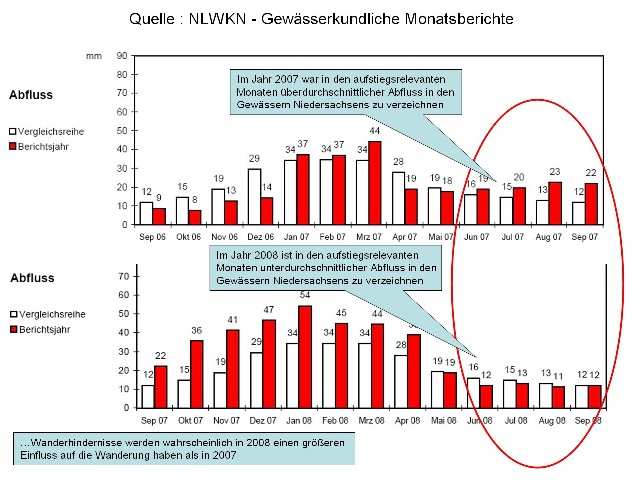 The picture shows the water level of the rivers in lowersaxony in 2007 and 2008. In those months that are mainly relevant for the spawning migration of the salmonids there was destinctively fewer water in the rivers in 2008 than it was in 2007 so that the impact of migrationsobstacles will be much higher than it was in 2007. |
||
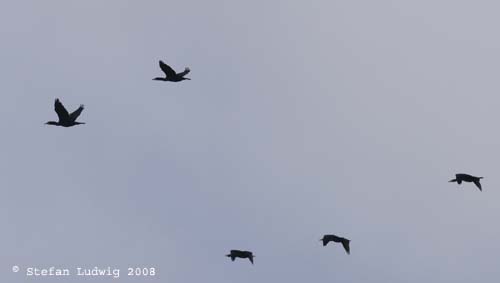 |
the normal escort were at that day comparable few... | ||